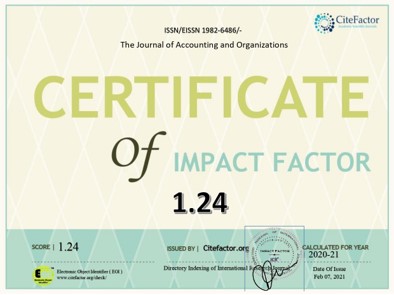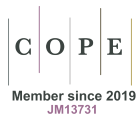Regras específicas para submissão de caso de ensino
General Conditions:
Before submitting manuscripts for evaluation, authors must be aware of, and confirm that:
- The concepts, opinions, and ideas published in the works are the sole and unique responsibility of their author(s).
- Manuscripts submitted to RCO are unpublished. Works published in proceedings of scientific meetings, such as conferences, seminars, symposiums, etc., are considered unpublished.
- The manuscripts are not under evaluation in any other publication venue during the entire evaluation process.
- Maximum number of authors per article: 4. Exceptional cases duly justified may be analyzed by the RCO Executive Committee.
- Anonymity of authors in all submitted documents.
- Authors commit to sending, upon approval for publication, the article in two versions, one in Portuguese and another in English.
Preparing the Submission:
- The teaching case will be submitted only through an electronic form available on the journal's website (http://revistas.usp.br/rco).
- Authors must correctly fill out their information in the submission system; this information is indispensable at the time of publication.
- Submissions that are not in compliance or are incomplete will be returned to the authors.
- Direct, concrete, objective style. Avoid the use of acronyms in the text and tables.
- Readers should easily understand what is being discussed.
Submission of a manuscript includes:
- A letter to the editor
- Complete data (phone numbers and address), institutional affiliation, and ORCID iD registration number, registered on the website.
- The main manuscript in editable format, must contain abstracts in Portuguese and English.
- Supplementary documents, if necessary.
Cases and other documents must be submitted only through an electronic form available on the journal's website (http://revistas.usp.br/rco), following the following norms:
- The accepted text editor is Word 6.0 or higher;
- Font: Times New Roman, size 12;
- Line spacing: single;
- Justified alignment;
- Margins: top and left – 3 cm, bottom and right – 2 cm;
- Number of words, including title, abstract, text, references, and illustrations: between 4,000 and 6,000 words.
Teaching cases have an educational objective, aimed at learning and the development of specific competencies in a given discipline. Teaching and learning with cases require them to be well-written and capable of leading students to take on the role of analysts and protagonists of a quality narrative.
In this sense, we suggest that the teaching cases to be submitted follow the structure proposed by Alberton & Silva (2018); and adapted by Silva & Bandeira-de-Melo (2021):
Introduction - Delimit the time and place in which the case develops, as well as characterize the protagonists and introduce the dilemma, which will be detailed in the subsequent sections and revisited at the case's closure.
Case Context - Present the context and the agents involved in the specific situation, linked to the case's theme, with the indication of objective facts covering a situation. The case context can be described in various sections, whose titles are defined by the authors according to the objectives and their creativity.
Case Dilemma - It is recommended to present more specific information to provoke the reader to reflect on the decision involved.
Case Closure - Comprises one or two final paragraphs in which the author exposes some directions regarding the case's dilemma that announce its closure and the decisions that need to be made. It may include some more reflective questions that clearly delimit the case's scope and will support the construction of the questions indicated in the teaching notes.
Attachments and/or Appendices - if applicable.
Teaching Notes - Aim to guide the teacher in resolving the case in the classroom and may include the following items: (a) data source; (b) didactic or educational objectives; (c) discussion questions, with respective analysis/discussion; (d) suggestion of a teaching plan; (e) literature review, presenting the main theoretical perspectives that underpinned the case and will support its analysis and direct action paths in discussing the questions; (f) case discussion or analysis; (g) references.
Teaching notes are not disclosed. If the teacher wishes to have access, simply contact the Journal at the email: rco@usp.br.
References
Alberton, A., & Silva, A. B. da. (2018). Como escrever um bom caso para ensino? Reflexões sobre o método. Revista de Administração Contemporânea, 22(5), 745-761. https://doi.org/10.1590/1982-7849rac2018180212
Silva, A. B. da, & Bandeira-De-Melo, R. (2021). Aprendendo em ação: utilização de casos para inovação no ensino e aprendizagem. Editora UFPB. Available at: http://www.editora.ufpb.br/sistema/press5/index.php/UFPB/catalog/view/680/961/8722-1







